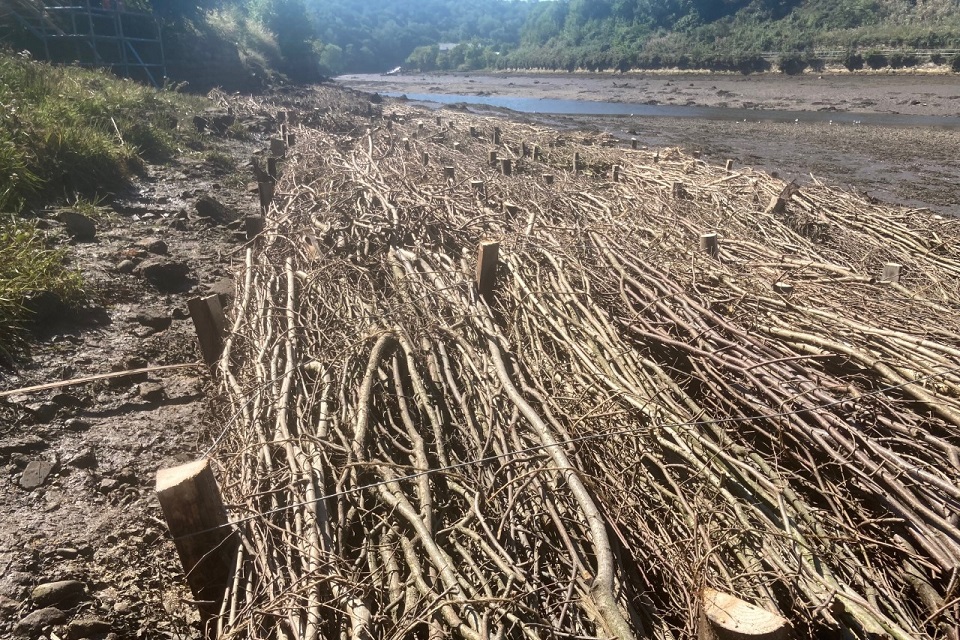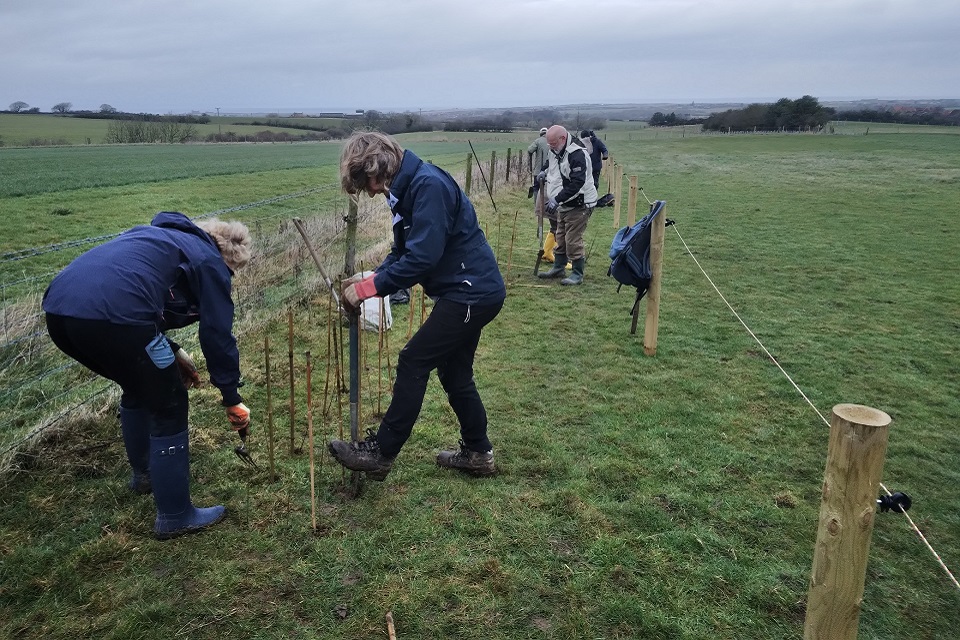New artificial habitats including a living sea wall, rock pools and hanging fish shelters are being installed at Whitby Harbour as part of a pilot project to boost biodiversity and improve water quality in the River Esk.
The man-made marine habitats are being created as part of Better Estuaries and Coastal Habitats (BEACH) Esk, a partnership project between the Environment Agency, Yorkshire Wildlife Trust and Groundwork North East & Cumbria, supported by private local landowners, Scarborough Borough Council and Yorkshire Water.
The aim of the project is to trial a range of artificial marine habitats to identify which have the most success attracting marine life species and colonisation. The School of Biological and Marine Sciences at Hull University will monitor the results.
It is hoped that the pilot will pave the way for interventions to be rolled out in other estuaries in future.
Allison Pierre, project lead for the Environment Agency, said:
The ecological health of our rivers must improve. Historic man-made structures in our estuaries and the ongoing pressures from human activity are adversely affecting water quality, habitat and wildlife.
Creating artificial habitats will provide an opportunity for nature to thrive above and below the water and, combined with other interventions such as reducing pollution upstream and creating new saltmarsh and wetland, will help communities reconnect with their local rivers, bring shelter and food for fish and wildlife, and support improvements in water quality.

Saltmarsh restoration
Esk is important for migratory fish
The artificial habitats will be installed at New Quay, Fish Quay, Endeavour Wharf and Scotch Head and include award-winning Living Seawalls Panels which were installed this month, and artificial rock pools and suspended fish shelters which will be installed in the coming weeks.
The Esk Estuary is important for migratory fish including Atlantic salmon and sea trout and other species such as sea lamprey and eel. These fish species support the rare and endangered freshwater pearl mussel which lives in the River Esk.
The new habitats will provide feeding grounds and refuges for fish and especially for juveniles seeking shelter.
Matt Machouki is the project lead for Groundwork North East & Cumbria, which is spearheading a number of biodiversity and environmental clean-up operations as part of its Revitalising our Estuaries programme. The programme spans a huge stretch of the North East coastline and riverside from as far north as Blyth and Tyne and Wear, down to the Esk valley and Whitby. Matt said:
Much of our natural intertidal habitat has been lost and it continues to be compromised, or eradicated by 'coastal squeeze'. Trialling techniques that encourage the recreation of this unique habitat and improve water quality is fantastic and much-needed, and we hope will add to the growing bank of knowledge in this area and enable it to be extended in the future.
These interventions also provide valuable opportunities for local communities to connect with the river, with the social, health and well-being benefits this delivers.

Upstream hedgerow planting
Interventions from 'source to sea'
The BEACH Esk project, which started in 2020, includes interventions from 'source to sea' to reduce pollution and create and improve habitat in the River Esk, its tributaries and its estuary at Whitby Harbour.
Water quality in Yorkshire's estuaries is affected by activity in the harbours as well as in the river tributaries that lead to the estuaries and coasts. Historic land reclamation for industry and sea wall construction - a problem known as 'coastal squeeze' - has also led to loss of habitat.
The wider BEACH Esk project includes:
- Carrying out surveys from 'source to sea' to identify potential sources of pollution
- Working with farmers upstream to reduce agricultural pollution by fencing off rivers from livestock, planting trees and hedges to reduce pollution run off from land, and creating ponds and wildflower grasslands.
- Planting trees and hedgerows upstream - 1,600 trees and 2,800m of hedgerow were planted upstream last year.
- Restoration of vital saltmarsh habitat at Whitehall Landing in the Esk Estuary
- Scoping for a possible future project to place a small population of native oysters in Whitby harbour to identify any improvement in water quality they provide
- Large scale public engagement and education to encourage people to stop pouring fats and oils down the drains, as well as working with boat users to reduce oil and fuel spills into the water.
- Social and economic benefits such as public footpaths and access routes to connect people to the river and estuary.
Chris Watt, who is leading on upstream interventions for Yorkshire Wildlife Trust, said:
Yorkshire Wildlife Trust is working on the upper tributaries of the River Esk with 12 landowners to reduce sediment and pollution and bring hugely important benefits to water quality downstream and habitat across the catchment.
Together we're restoring grassland, wetlands and hedges and improving homes for Yorkshire's glorious wildlife and wild places.
Funding for the £270,000 project on the River Esk has come from the Environment Agency through its Water Environment Investment Fund (WEIF) and from the Government's Green Recovery Challenge Fund, administered by the National Lottery, along with further private investment. Capital works on the tributaries is funded through Farming in Protected Landscapes programme.






